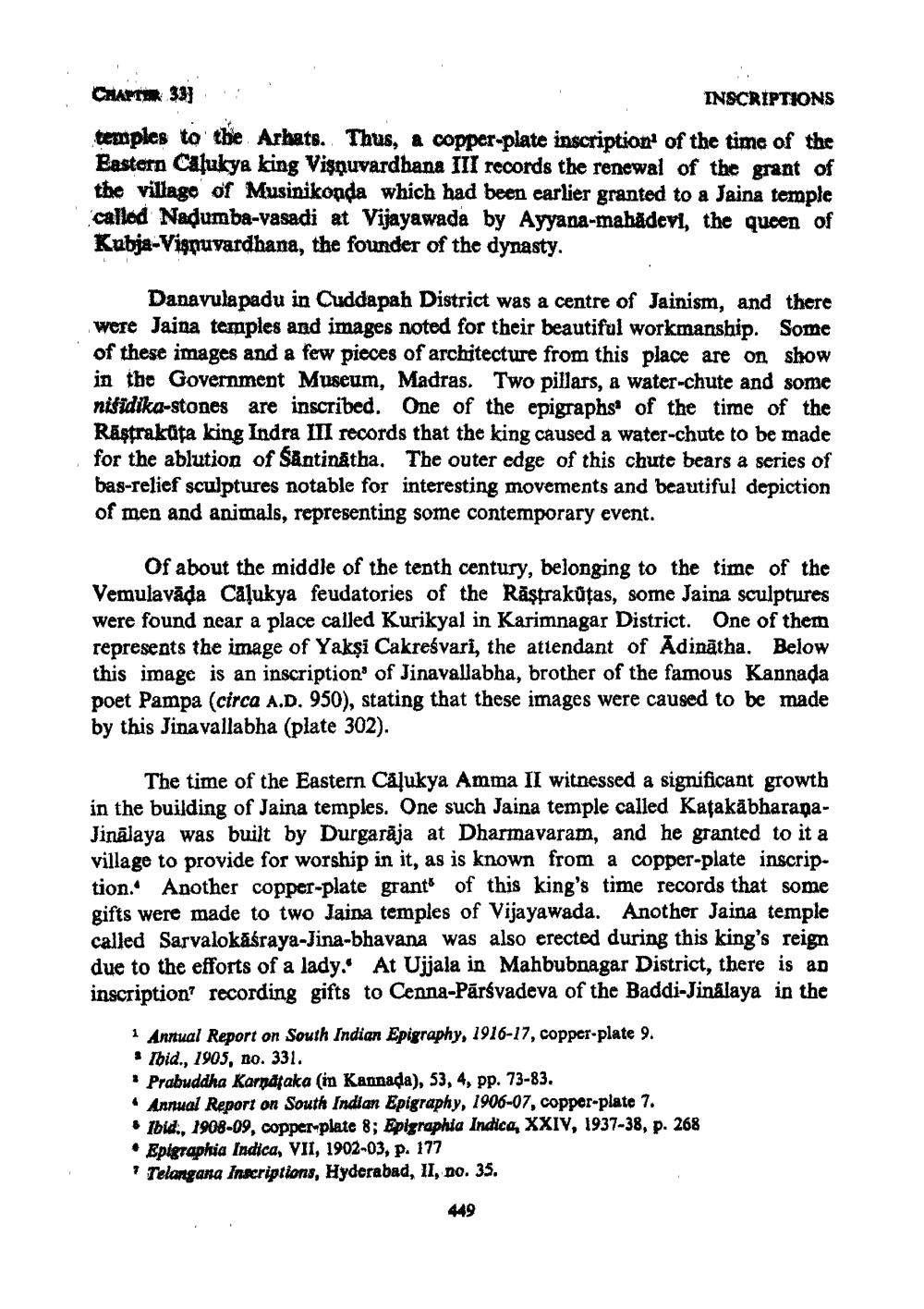________________
CHAPTER 33
INSCRIPTIONS temples to the Arhats. Thus, a copper-plate inscription of the time of the Eastern Calukya king Vişnuvardhana III records the renewal of the grant of the village of Musinikonda which had been earlier granted to a Jaina temple called Nadumba-vasadi at Vijayawada by Ayyana-mahadevi, the queen of Kubja-Vispuvardhana, the founder of the dynasty.
Danavulapadu in Cuddapah District was a centre of Jainism, and there were Jaina temples and images noted for their beautiful workmanship. Some of these images and a few pieces of architecture from this place are on show in the Government Museum, Madras. Two pillars, a water-chute and some nifidika-stones are inscribed. One of the epigraphs of the time of the Rāstrakata king Indra III records that the king caused a water-chute to be made for the ablution of Santinátha. The outer edge of this chute bears a series of bas-relief sculptures notable for interesting movements and beautiful depiction of men and animals, representing some contemporary event.
Of about the middle of the tenth century, belonging to the time of the Vemulavāda Calukya feudatories of the Răstrakūtas, some Jaina sculptures were found near a place called Kurikyal in Karimnagar District. One of them represents the image of Yakşi Cakreśvari, the attendant of Adinātha. Below this image is an inscription of Jinavallabha, brother of the famous Kannada poet Pampa (circa A.D. 950), stating that these images were caused to be made by this Jina vallabha (plate 302).
The time of the Eastern Cåļukya Amma II witnessed a significant growth in the building of Jaina temples. One such Jaina temple called KatakäbharapaJinalaya was built by Durgarāja at Dharmavaram, and he granted to it a village to provide for worship in it, as is known from a copper-plate inscription. Another copper-plate grants of this king's time records that some gifts were made to two Jaina temples of Vijayawada. Another Jaina temple called Sarvalokāśraya-Jina-bhavana was also erected during this kin due to the efforts of a lady. At Ujjala in Mahbubnagar District, there is an inscription" recording gifts to Cenna-Pārsvadeva of the Baddi-Jinalaya in the
1 Annual Report on South Indian Epigraphy, 1916-17, copper-plate 9. . Ibid., 1905, no. 331. * Prabuddha Karnataka (in Kannada), 53, 4, pp. 73-83. • Annual Report on South Indian Epigraphy, 1906-07, copper-plate 7. * Ibid., 1908-09, copper-plate 8; Epigraphia Indica, XXIV, 1937-38, p. 268 • Epigraphia Indica, VII, 1902-03, p. 177
Telangana Ingriptions, Hyderabad, II, Do. 35.




